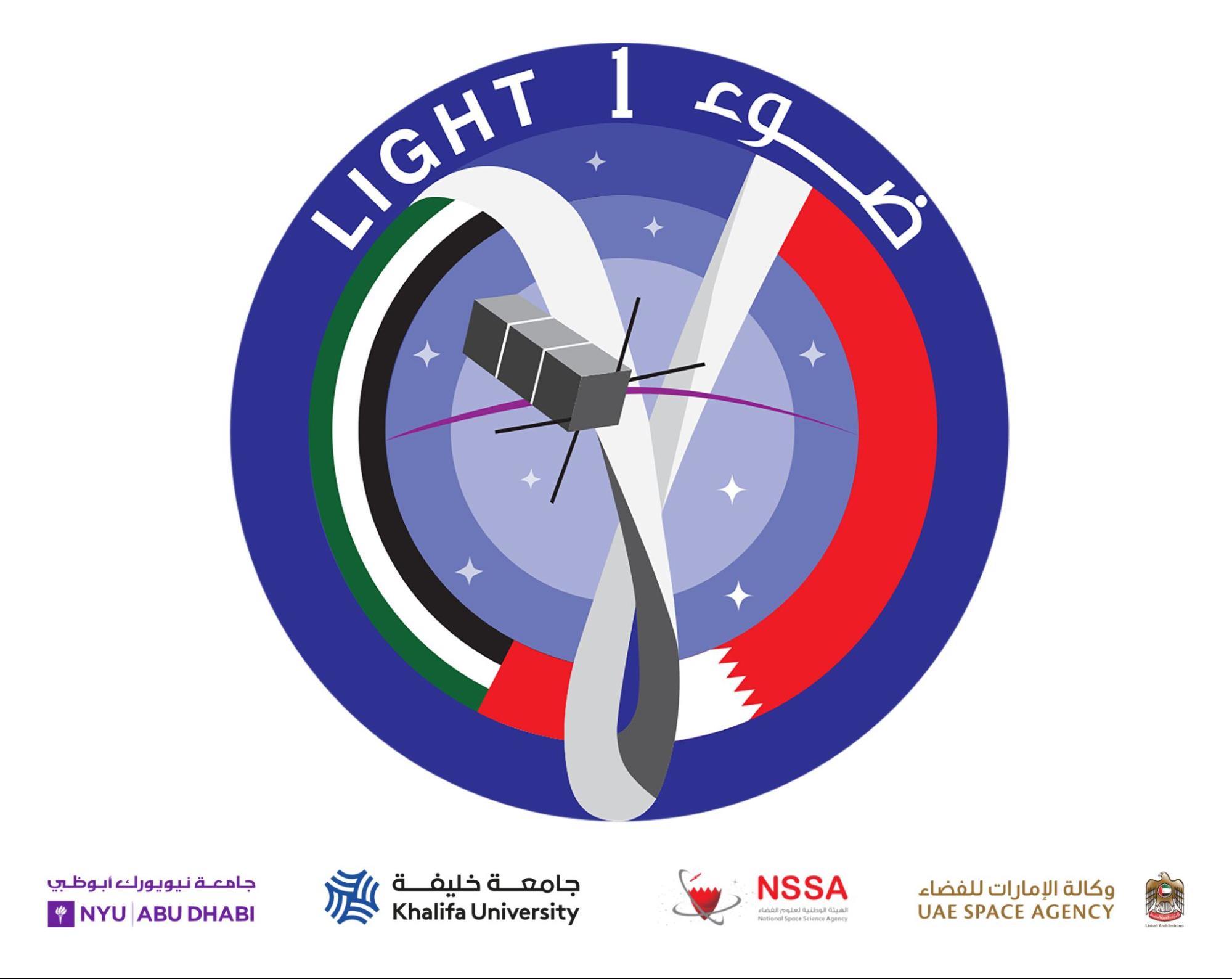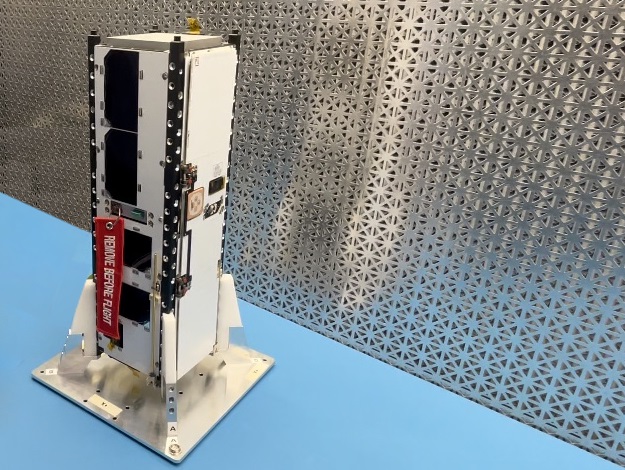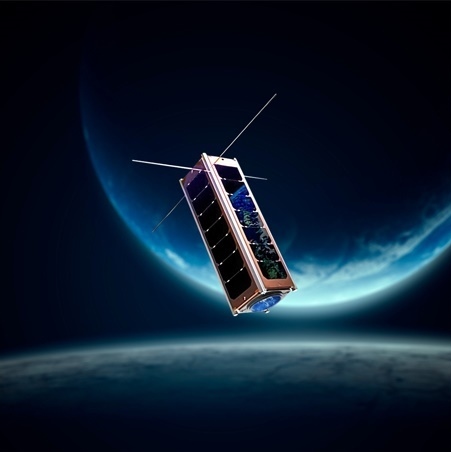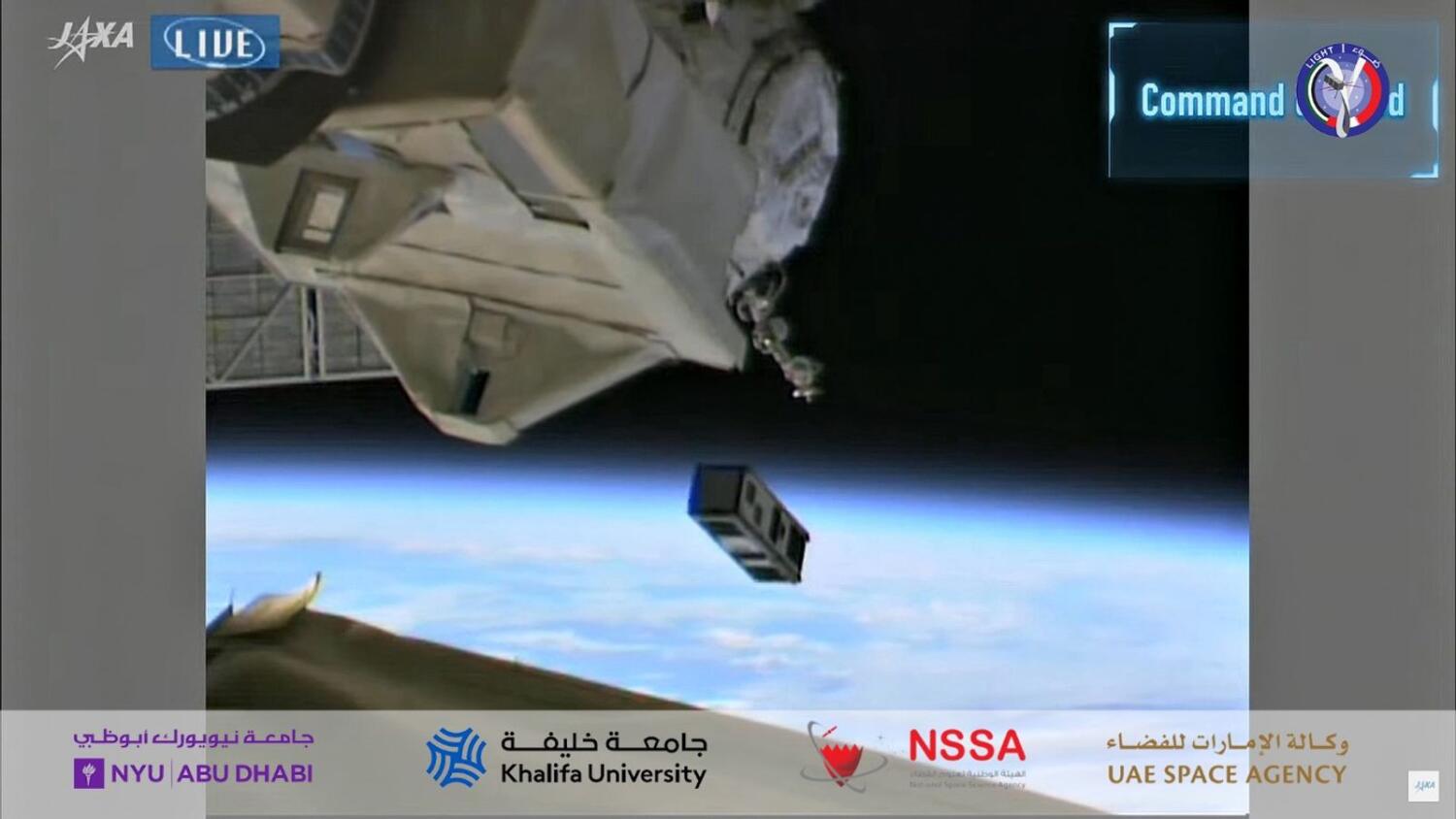Light-1
EO
Atmosphere
Radiation budget
Mission complete
Launched in December 2021, Light-1 is a 3U CubeSat whose operation is led by the United Arab Emirates (UAE) Space Agency and assisted by the Bahrain National Space Science Agency (NSSA). It monitors terrestrial gamma-ray flashes (TGFs), which are emitted during lightning storms, to provide insight into how TGFs affect aircraft, their passengers, and humans on the ground.
Quick facts
Overview
| Mission type | EO |
| Agency | UAE SA, Khalifa University, NYUAD |
| Mission status | Mission complete |
| Launch date | 21 Dec 2021 |
| End of life date | 16 Jan 2023 |
| Measurement domain | Atmosphere |
| Measurement category | Radiation budget |
| Measurement detailed | Downward short-wave irradiance at Earth surface |
| Instruments | TGF Detectors |
| Instrument type | Lightning sensors |
| CEOS EO Handbook | See Light-1 summary |

Summary
Mission Capabilities
Light-1 is equipped with TGF detectors. The TGF detectors are composed of scintillating crystals, crystals that emit light when hit by gamma rays. The light is then amplified by photomultipliers before being measured and processed by an electronic system.
Performance Specifications
Light-1 was deployed into an orbit with an altitude of approximately 400 km and an inclination of 51.6°.
Space and Hardware Components
Light-1 was launched on December 21, 2021, from the Kennedy Space Centre aboard a Falcon 9 launch vehicle as part of the SpaceX CRS-24 flight to the International Space Station (ISS). It was successfully stored by the Japan Aerospace Exploration Agency (JAXA) aboard the ISS until it was deployed from the Japanese Experiment Module (Kibo) on February 3, 2022.
Payload data is downloaded via X-band radio frequencies whilst Telemetry, Tracking, and Command (TT&C) is performed via ultra-high frequency (UHF).
Overview
The 3U CubeSat Light-1 is designed to monitor terrestrial gamma-ray flashes (TGFs) which are emitted during lightning storms. The study will provide insight into how TGFs affect aircraft, their passengers, and humans on the ground.

The satellite’s operation is led by the United Arab Emirates (UAE) Space Agency and assisted by the Bahrain National Space Science Agency (NSSA). But its design and manufacturing were largely done by university students from Bahrain and the UAE.
The name ‘Light-1’ was inspired by His Majesty King Hama bin Isa Al Khalifa of Bahrain’s book, titled ‘The First Light’. The book recounts key cultural and scientific moments in Bahrain’s history.
Spacecraft
The satellite was designed and built by a collective of 23 university students: nine Bahrainis, and 14 Emirati (ten from Khalifa University and four from New York University Abu Dhabi). But the overall process and operations were and are led by the UAE Space Agency.

Orbit: Light-1 was deployed into an orbit with an altitude of approximately 400 km and an inclination of 51.6°.

Launch
Light-1 was launched on December 21, 2021, from the Kennedy Space Centre aboard a Falcon 9 launch vehicle as part of the SpaceX CRS-24 flight to the International Space Station (ISS). It was successfully stored by the Japan Aerospace Exploration Agency (JAXA) aboard the ISS until it was deployed from the Japanese Experiment Module (Kibo) on February 3, 2022.
Alongside Light-1 on the Falcon 9 launch was a variety of other payloads weighing a total of 3000 kg: Christmas gifts, astronaut meals, and 500 research experiments including a fully biodegradable detergent aimed at reducing water usage and a handheld bandage bioprinter.
Mission Status
- May 12, 2022: Light-1 detected nearly 50 terrestrial GMTs during its first four hours of operation within a trial period.
- February 3, 2022: Light-1 was successfully deployed into orbit from the Japanese Experiment Module (Kibo).
- Dr Arif Sultan Al Hammadi, Executive Vice-President, of Khalifa University, said, "As this UAE-Bahraini nanosatellite reached its orbital position, we believe this collaboration initiative will stand out as the best example of what can be achieved by the scientists in the Arab world. We are happy to work with our brothers in Bahrain in scientific development that will not only benefit our countries but also the whole world and humanity. Also, this is a great effort between local universities in the UAE".
- Vice Chancellor of NYU Abu Dhabi Mariët Westermann commented, "I would like to congratulate our incredible team of students and faculty at NYU Abu Dhabi on their contributions to this historic mission, particularly their work pertaining to the scientific payload".
- Salem Butti Al Qubaisi, Director-General of UAE Space Agency, said, "The UAE has made massive strides in its space journey over the past few years, and the successful deployment of our Light-1 nanosatellite into orbit is a major milestone. We thank all our partners across the UAE, Bahrain, US and Japan for their support in making this mission possible".

- December 21, 2021: Light-1 was launched from the Kennedy Space Centre aboard a Falcon 9 launch vehicle as part of the SpaceX CRS-24 flight to the International Space Station (ISS).
- Dr Al-Asseri extended deepest congratulations to His Majesty King Hamad bin Isa Al Khalifa, His Royal Highness Prince Salman bin Hamad Al Khalifa, the Crown Prince and Prime Minister, and the National Security Advisor, Royal Guard Commander and Secretary-General of the Supreme Defence Council, His Highness Shaikh Nasser bin Hamad Al Khalifa, on the milestone. He also congratulated all the Bahraini citizens, stressing that the launch should inspire Bahraini youth to contribute to the nation's future accomplishments.
Sensor Complement
Light-1 is equipped with TGF detectors. The TGF detectors are composed of scintillating crystals, crystals that emit light when hit by gamma rays. The light is then amplified by photomultipliers before being measured and processed by an electronic system.
Ground Segment
Light-1 will communicate data with three ground stations: one in Vilnius, Lithuania; one in Aalborg, Denmark; and one on the grounds of Khalifa University in Abu Dhabi, UAE. Payload data is downloaded via X-band radio frequencies whilst Telemetry, Tracking, and Command (TT&C) is performed via ultra-high frequency (UHF).
References
1) “Light 1 satellite milestone”, GDN Online, 12 May 2022, URL: https://www.gdnonline.com/Details/1071979/Light-1-satellite-milestone#
2) “Bahrain launches first satellite, in cooperation with UAE”, Bahrain News Agency, 21 December 2021, URL: https://www.bna.bh/en/news?cms=q8FmFJgiscL2fwIzON1%2bDgZTdPlXvwV%2bIJrsZpZiJpM%3d
3) “UAE-Bahrain Nanosatelltie Light-1 arrives at International Space Station”, Gulf News, 21 December 2021, URL: https://gulfnews.com/uae/uae-bahrain-nanosatellite-light-1-arrives-at-international-space-station-1.84541340
4) “Joint UAE-Bahraini nanosatellite Light-1 set to launch on 21st December”, Khalifa University, 20 December 2021, URL: https://www.ku.ac.ae/joint-uae-bahraini-nanosatellite-light-1-set-to-launch-on-21st-december
5) “UAE-Bahraini nanosatellite Light-1 launched successfully into orbit”, Khaleej Times, 3 February 2022, URL: https://www.khaleejtimes.com/uae/uae-bahraini-nanosatellite-light-1-launched-successfully-into-orbit
6) Naman Arora, “Here is all you need to know about Bahrain’s nanosatellite Light-1”, GDN Online, 22 December 2021, URL: https://www.gdnonline.com/Details/1017609/Here-is-all-you-need-to-know-about-Bahrains-nanosatellite-Light-1